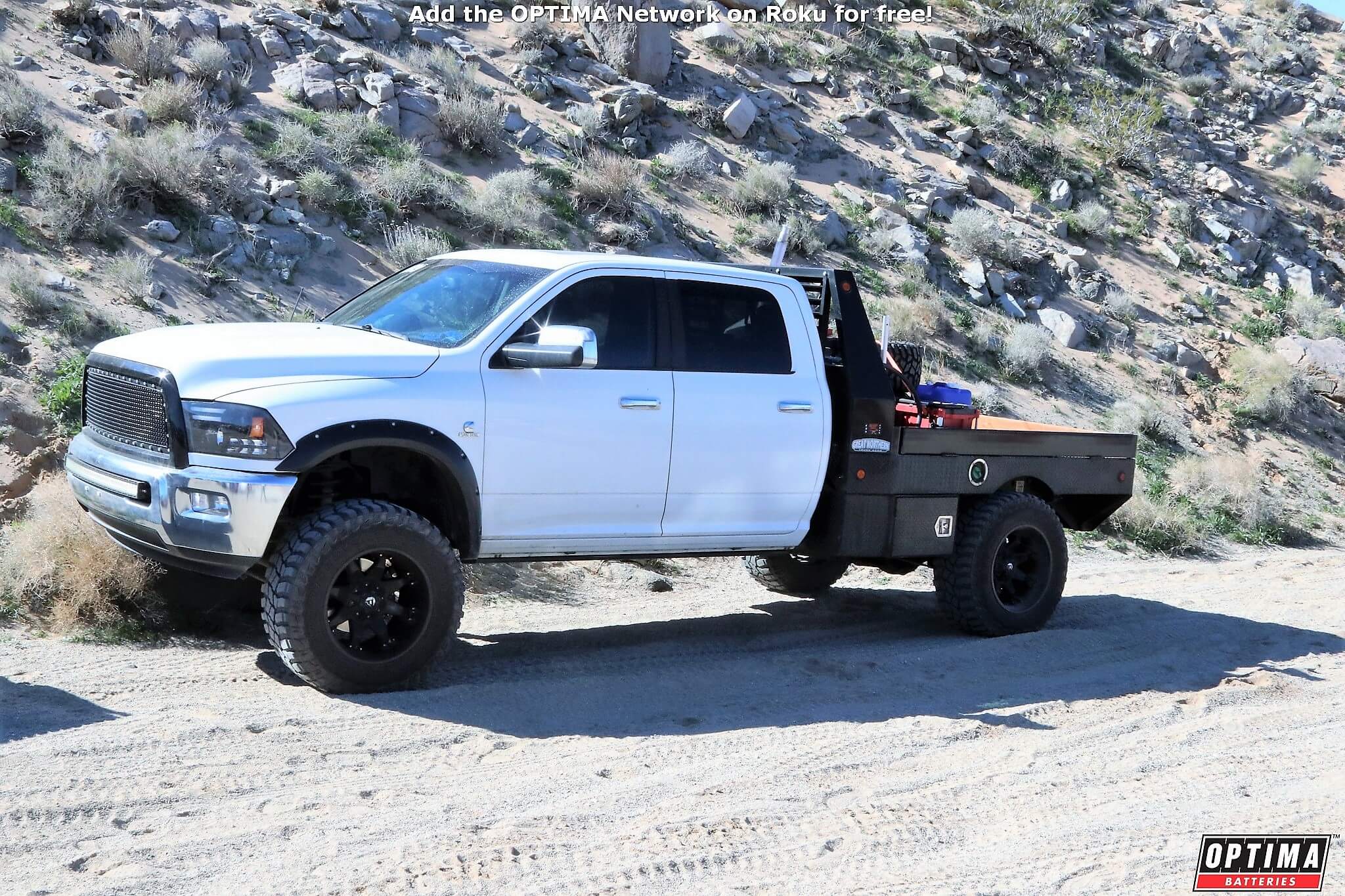Why do diesel trucks have two batteries?

- Sponsor
- OPTIMA Batteries
- Location
- Landers, CA


If you have a diesel truck, you probably have two batteries under the hood, but why is that? Well, there are a couple of reasons that start before the truck even starts. Many diesel engines operate differently than gasoline-powered engines, in that they depend on compression to raise the temperature to the point that diesel fuel combusts, versus a gasoline engine that uses spark plugs to ignite fuel. Glowplugs in diesel engines are used before the engine even starts to preheat the combustion chamber and they consume a fair amount of electrical energy to do that.
Once the key is turned to start a diesel engine, quite a bit of cranking power is required, because diesel truck engines tend to have higher compression (the Duramax is 17.5 to 1), versus their gasoline counterparts (a 5.3-liter V8 might be 9.5 to 1). Colder temperatures can make it even harder to start an engine and automakers try to make sure when they build a truck, they design it to start in nearly any weather conditions a consumer might face, including extreme temperature swings. Could one battery accomplish this task? In most situations, probably, but there is an inverse relationship between the number of times you can cycle a battery and the depth to which you discharge a battery. In simple terms, you can get far more cycles out of a battery that is routinely discharged only slightly, versus a battery that is discharged to a more significant degree.
Automakers know this and batteries like the OPTIMA H6 YELLOWTOP, which is a direct-fit replacement in many GM diesel trucks, are significantly larger than the batteries typically found in previous generations of trucks. At 54 pounds, that battery is more than 36% heavier than the Group 78 batteries found in older GM trucks. However, if you have a diesel truck with two batteries and one needs to be replaced, you really should replace both batteries at the same time. Batteries in series or parallel applications, where more than one battery is connected to another battery should always have batteries that are identical in age, size and type.
Batteries that are different from each other in any of those ways will behave differently when delivering and receiving electricity, which can leave one chronically undercharged, while the other is chronically overcharged, shortening the lifespan of both.
